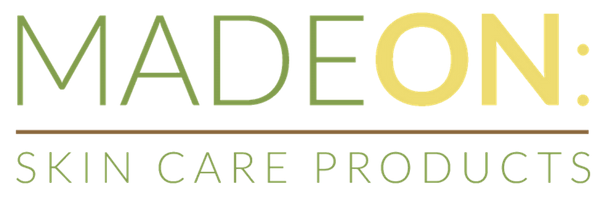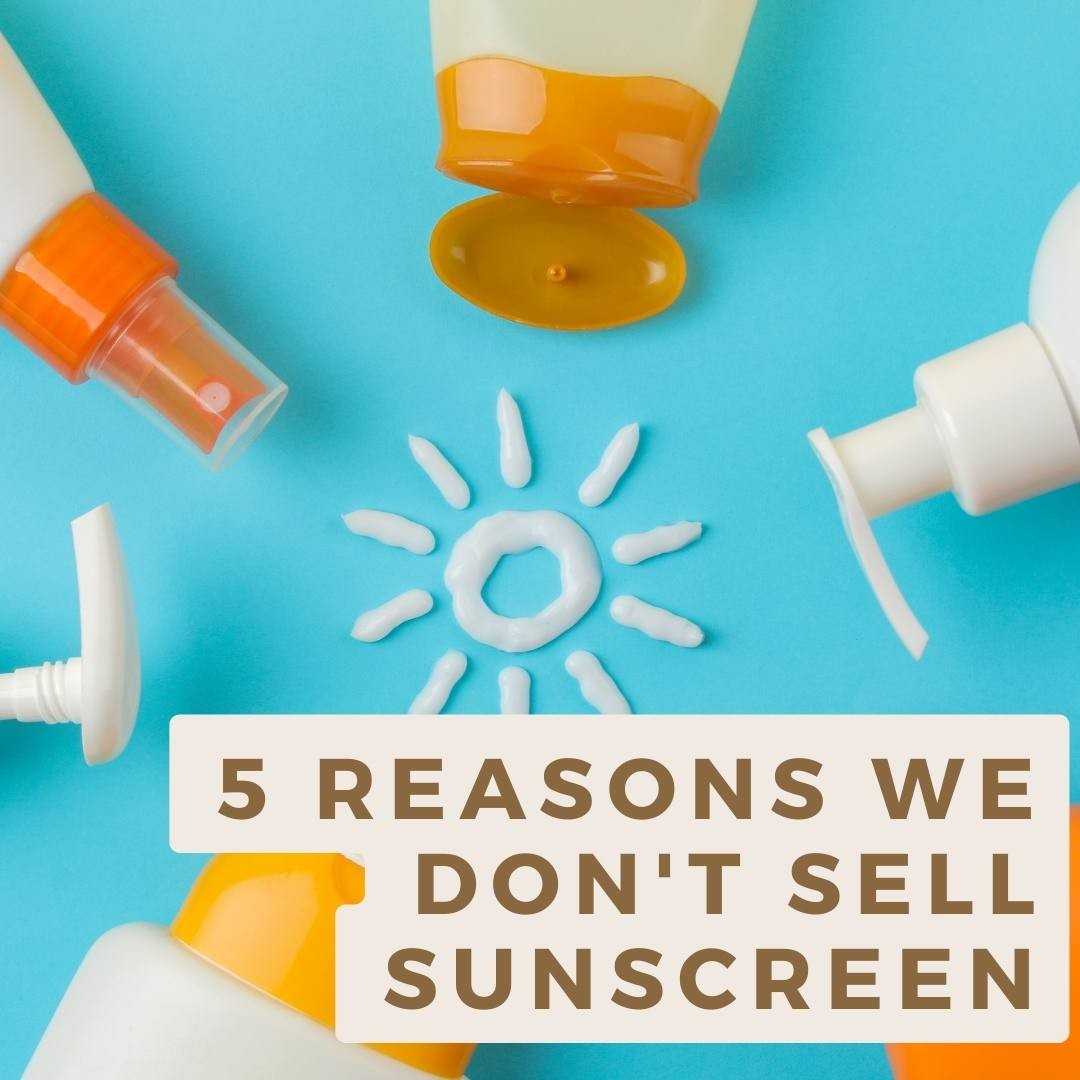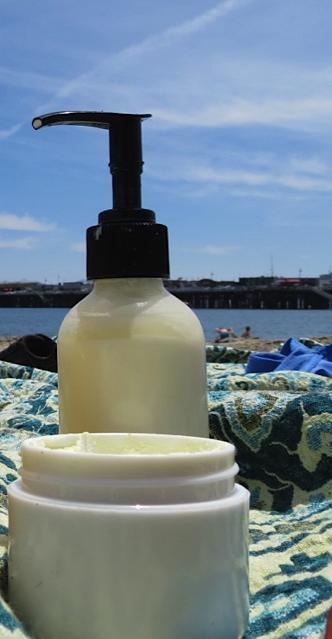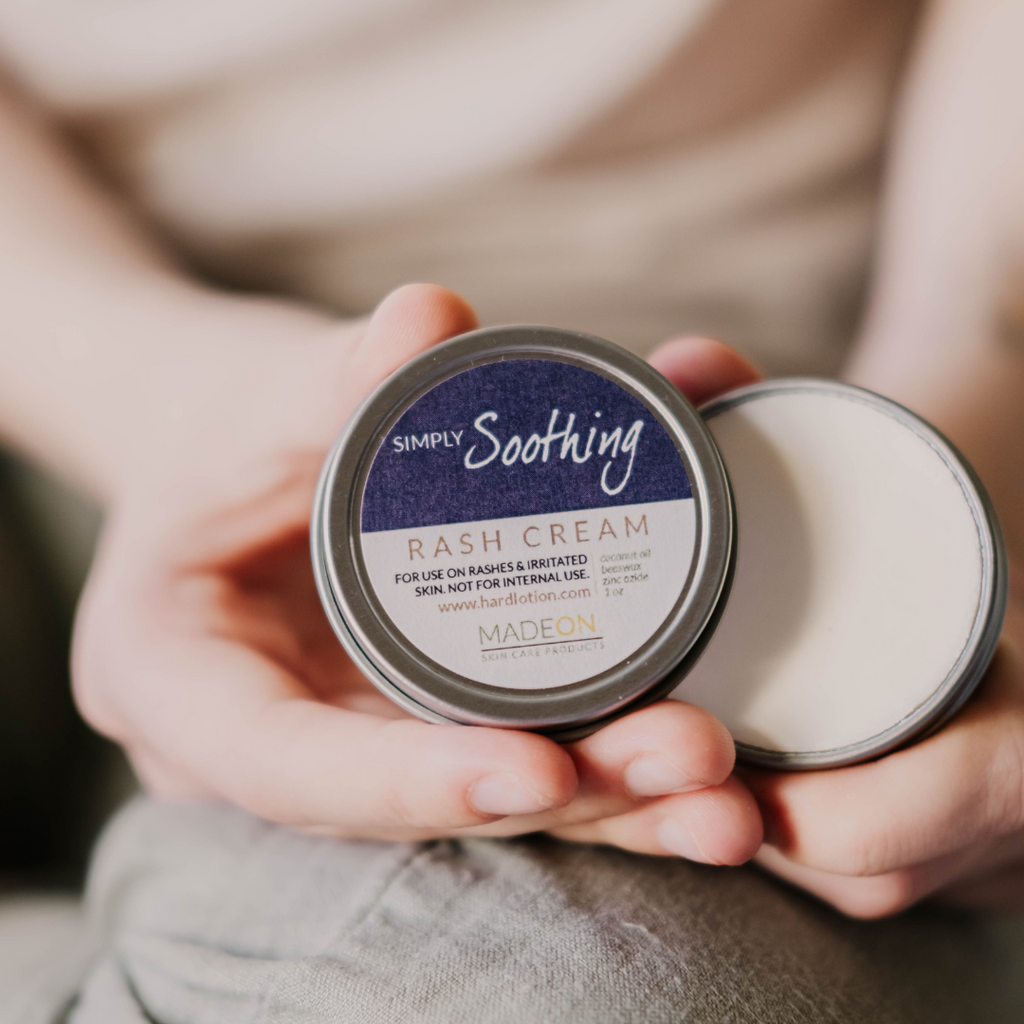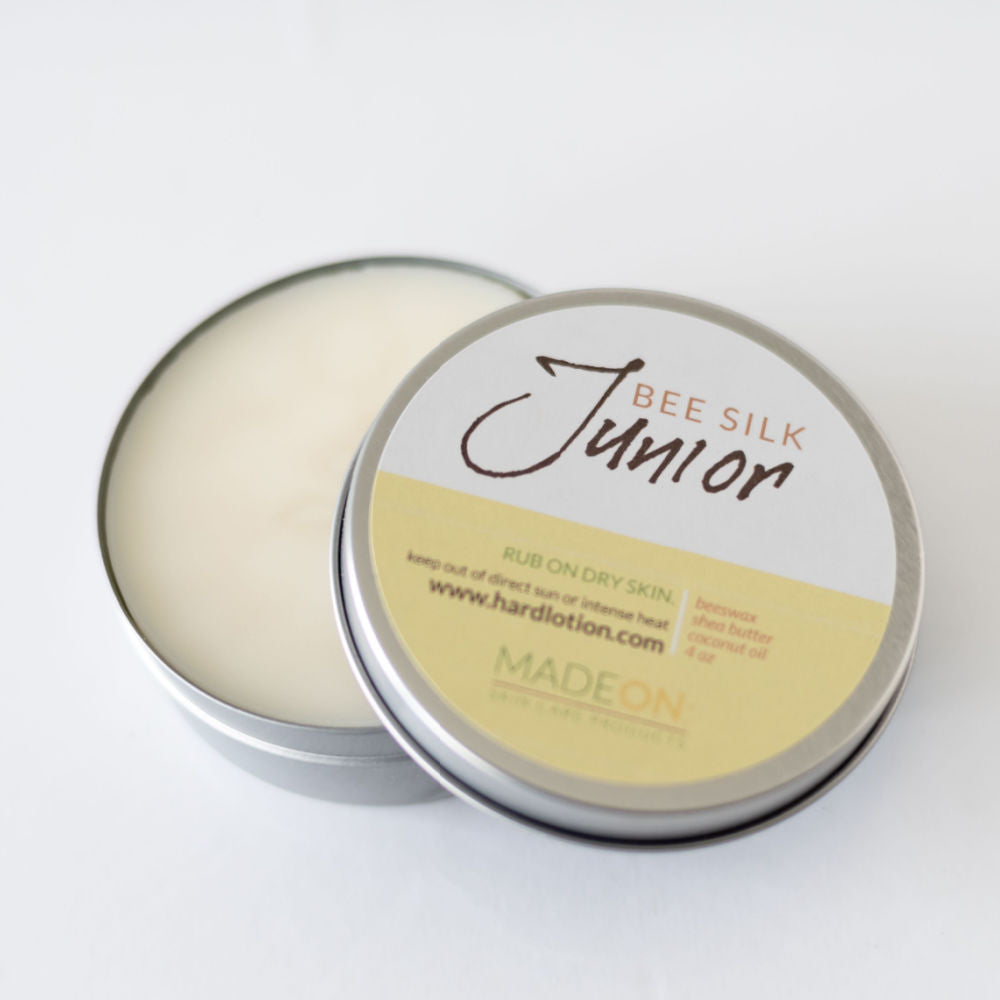I would love to sell sunscreen
I really would.
Renee,
I'm interested to know if you sell natural, safe sunscreen products. If you do, what is the SPF range? Is it water repellent for sports? What is the cost?
Thank you,
Claude
Here's the deal: while there are some great sunscreen products on the market, I know my readers well. They prefer something where they fully understand the ingredients going into the product, and they’d like to know that they could make it themselves if they wanted to. Most importantly, they want to know that it works at least as effectively as store-bought sunscreen. In a nutshell, they want to know it's a safe sunscreen.
If I sold safe sunscreen, what would the ingredient list look like?
Zinc oxide. The Environmental Working Group included zinc oxide as one of the safest ingredients to use in a sunscreen, citing that it gives “excellent UVA protection”, very little chance of an allergic reaction, no hormone disruption, and hardly any skin penetration.
Coconut oil. It certainly doesn’t have to be coconut oil, but it’s what I’ve used in my family’s sunscreen and I’m sticking to it. It’s a good oil to blend the zinc oxide with, and because it’s liquefied in warmer weather, it will create a nice creamy texture to your sunscreen.
Shea butter. This butter is so nourishing to the skin. Your sunscreen will not only act as a protection from UVA but it will act as a lotion to condition your skin. (It's optional... if you don't want the extra lotion-y feel, it can be left out.)
Beeswax. Your sunscreen needs something to emulsify the ingredients into one cream, and that’s the job of the beeswax. Beeswax is also a thickener, keeping it thick enough to hold together in your beach bag without turning it into liquid form.
That's it!
No need for oxybenzone, or octinoxate, or the common sunscreen preservative methylisothiazolinone (named “allergen of the year” by the American Contact Dermatitis Society).
So if I create the recipe that my customers approve of, and follow the SPF requirements set by the FDA, I’ve got the perfect product, right?
Not so fast, Surfer.
(Don't give up hope, though. You can use our Simply Soothing Rash Cream in a pinch because the ingredients are all there... it's on YOU to make sure you don't burn.)
I dove into the research with the hope of having something ready for you to buy (this was back in 2015).
Here’s what I found about safe sunscreen regulations:
Prior to 2012, FDA regulations for sunscreens dealt almost exclusively with protection against sunburn, which is primarily caused by ultraviolet B (UVB) radiation from the sun. Now the FDA regulates for warnings about skin cancer and early skin aging as well, which is contributed by ultraviolet A (UVA) radiation. When you read a sunscreen label offering “broad spectrum” sun protection, that product has been tested for both UVB and UVA.
If I wanted to sell a sunscreen online, here’s what I would need to do:
I would need to send in a batch of sunscreen to be tested at an FDA approved test facility. I checked around and found that these cost several thousand dollars. This shouldn’t stop the savvy business person if there’s a good return on investment, but…
Testing one batch does not mean automatic approval. I would have to send in batch after batch, and pay for each one, until one was approved. Ouch. That would require some serious leg work first, which can be done… but what about the hiccups like…
Blending zinc oxide into your batch of sunscreen does not mean that the zinc oxide is equally blended throughout the cream. This is something to consider when you make it at home. Although you may have a fairly consistent blend, your SPF could vary (albeit slightly) within the same batch of sunscreen. There’s a risk with each batch. Bwaaah… back to the drawing board, or investing in a very powerful blender.
Zinc oxide is zinc oxide, which does leave a bit of whiteness on the skin. The more zinc that is blended in, the higher the SPF, but who wants to look like a ghost? While I might be fine with an SPF of 15, someone else might insist on a 50, which brings on an even greater amount of FDA regulation. It comes down to what my customers want…
Finally, there’s the whole waterproof claim. Even if I could prove the sunscreen is waterproof, the FDA does not allow me to say that it’s waterproof. I can’t call it sunblock, either. I could call it water resistant, if I’m willing to test the length of time the sunscreen is water resistant, and pay for that test, too.
And so, while I used to make sunscreen for our family, now I just grab our Simply Soothing Rash Stick and keep that handy. If you do make your own, remember about the blending aspect of it (#3 above). When you make sunscreen, you are making it at your own risk. As always, be aware of the dangers of overextended exposure to the sun and cover when necessary… with clothing, or sunscreen.
A Safe Sunscreen Company I Recommend:
While I use our Simply Soothing as a back-up, if I know I'll be at the beach for an extended period of time (especially in the beginning of the summer), I pack my 3rd Rock Sunscreen. I love the smell, it acts somewhat like a lotion, and it's extremely effective. Find it here (affiliate link) and/or read my experience with it here.
An Extensive Review of Safe Sunscreens by Katie from Kitchen Stewardship
If you're really into sunscreen but don't have time to dig in and find out the pros and cons of all the various companies, I highly recommend following Katie of Kitchen Stewardship. She's sacrificed years of deep research, experimentation, and her family's skin to bring you her top choices. Read those here: https://www.kitchenstewardship.com/natural-mineral-sunscreen-reviews/
Renee Harris, owner
P.S. Are you interested in even more research? Here are some links to read up on:
Regulatory Explainer: Understanding the Regulation of New Sunscreen Ingredients - Published March 2014. Explains which sunscreen ingredients are approved now, and why there’s a hold-up of having other sunscreen ingredients approved.
Labeling and Effectiveness Testing: Sunscreen Drug Products for Over-The-Counter Human Use – Published December 2012. Everything you want to know about labeling and testing, straight from the FDA.
The Trouble With Sunscreen Chemicals – Published 2015. The Environmental Working Group’s research on sunscreen ingredients and their safety levels.
More Help for Sun-Parched Skin
Simply Soothing Rash Cream Testimonial
Jane W:
This rash cream is wonderful!!!! It works on all of my family’s skin rashes, irritations, itches - we use it for everything. And it works!!
this was a gift for family who use it whenever they are in need of it.
I’ve never been disappointed with any product from MadeOn Skincare! Thank you again, Renée!
I got my first order while I was suffering a contact dermatitis eczema flair-up. This type of skin allergy causes my skin to become raw and weeps serum. My skin had stopped weeping and bandages were no longer needed by the time I received the Rash Cream. By this time, my skin was very dried and flaky as well as itchy. The rash cream healed this large patch of skin on my thigh within a week. Sometimes I forget to wear gardening sleeves and my arms get itchy bumps from various plants I’m pruning. The Rash Cream really helps! I love that the cream has no scent and goes on smooth. Also, a little go a long way!
I would have shared a picture, but it was too ugly! I love this cream!
Rash cream came just in time to help with my contact dermatitis from rye grass pollen. I still have the scars from it but it helped with the itching and inflammation.
Gifted my granddaughter Beesilk Junior and the rash cream. Within a week eczema on her six month old son back was gone! Lotion was a great success!
I absolutely love this! I have ordered several and will keep repurchasing for every summer! It’s amazing on sunburn. I used to use Ocean Potion sun lotion on my babies and it was amazing then they stopped making it…! I found out about MadeOn and tried a few things and this Rash Cream is the best! I apply it to sunburn a few times a day to my kids faces and now bring it on our yearly family vacation to FL for all my nieces and nephews’ little faces too! If you apply it a few times a day, reapplying once it soaks in, it’s gone or almost gone the next day and even on severe sunburn it has greatly lessened the pain and prevented blisters on one of my nephew’s shoulders! It’s expensive but I would imagine it last a while if you’re only using it on a few ppl. I bring a new can and use it daily for a week on a bunch of kids and usually give it to any that got really bad sunburn and need to keep applying it for a few more days. FL sun is mean and can burn you so much faster
Carry in purse for itchy
rashes and bug bites.
I use this on ezcema spots and bug bites. Works great!!
After several years of having eczema around his cheeks and ear areas, my husband has found total relief. Shaving had become difficult and very painful and so I ordered Made On rash cream. After only one week he noticed so much difference that I ordered him two more large of the cream he is a client for life.
